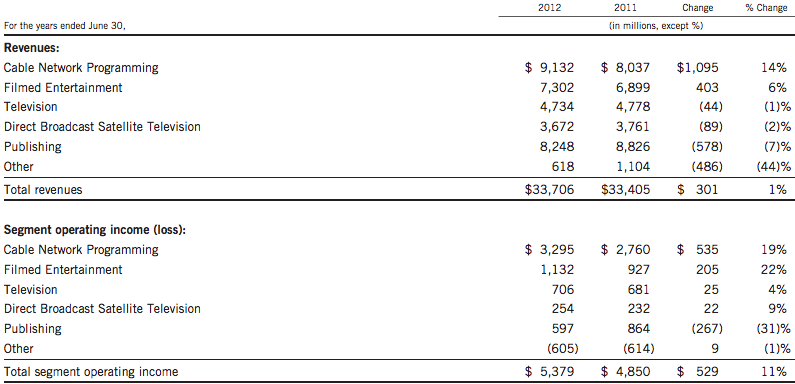It’s not a great sign that the Times of London is laying off 20 editorial staffers just as it parent company is splitting in two. And while the layoffs amount to less than 10 percent of the staff, the significance is in the reason given by its acting editor, John Witherow, who explicitly says that “subsidies” from News Corp.’s more lucrative cable, TV, satellite, and film operations are coming to an end.
As Warren Buffett famously said, “You only find out who’s swimming naked when the tide goes out,” and we’re about to see what News Corps.’s 120 or so newspapers, including its most celebrated acquisition, The Wall Street Journal , have been wearing all these years. The split of the company into publishing and entertainment units became official Tuesday.
This is going to be interesting, maybe in the Chinese curse sense, as the new company (which keeps the old News Corp. name) promises to be much more vulnerable to the era of media upheaval.
It will certainly be a lot smaller. The publishing segment, with $8.2 billion in revenue, makes up about 24 percent of the current News Corp.’s $33.7 billion and 11 percent of its operating income ($597 million of $5.4 billion).

It’s nothing to sneeze at. It will still be a Fortune 500 company and four times bigger than the New York Times Co., for instance.
But still, it’s not, as the current company is, the second-largest entertainment company in the world (the entertainment company, 21st Century Fox, will likely slip to third after the split).
What’s more, the value of the publishing segment itself has been shrinking. On the eve of the split, the company announced it was writing down between $1.2 billion and $1.4 billion of its value (more than the entire NYTco. is worth). Among other things, the segment was hurt by the closing of The News of the World in the wake of the hacking fiasco, as well as struggles in the Australian market.
As Bloomberg reported, the publishing unit posted a net loss of $1.89 billion for the fiscal year ending June 30, due to writedowns of $2.6 billion, mostly related to “reductions in the value of newspapers.” In 2009, News Corp. also wrote down its Dow Jones unit, The Wall Street Journal‘s publisher, by another $2.8 billion, about half the $5 billion-plus that Murdoch paid for the company in December 2007.
And at an investor meeting last month, Robert Thomson, the chief executive officer of the publishing group, said the company expects “to be relentless in our cost-cutting and in our pursuit of profits.”
Okay. None of that bodes well for The Wall Street Journal and its sister papers, especially, you’d think, the New York Post, which loses as much as a whopping $110 million annually, according to Brett Harriss, an analyst with Gabelli & Co., quoted by Bloomberg.
But a couple of things to keep in mind.
The Journal itself is profitable, by its own account, and an analyst quoted by Ad Age, who calls it calls it “solidly” so.
Circulation at the paper is up, propelled by the digital side and its paywall, one of the oldest in the business.
And the new News Corp. starts with $2.6 billion in cash, a parting gift from the entertainment wing, and no debt.
At the investor conference, News Corp. executives went to great lengths to stress that half of the new publishing company’s revenue will come from something other than advertising, which of course has been plunging across the industry. They pointed, for instance, to Dow Jones’s financial-information business, which has the unenviable task of competing with Bloomberg, as well as Reuters.
How it will do is anyone’s guess.
But there will be a lot more visibility for one of the world’s largest newspaper publishers now that the tide has gone out.
Dean Starkman Dean Starkman runs The Audit, CJR’s business section, and is the author of The Watchdog That Didn’t Bark: The Financial Crisis and the Disappearance of Investigative Journalism (Columbia University Press, January 2014). Follow Dean on Twitter: @deanstarkman.
